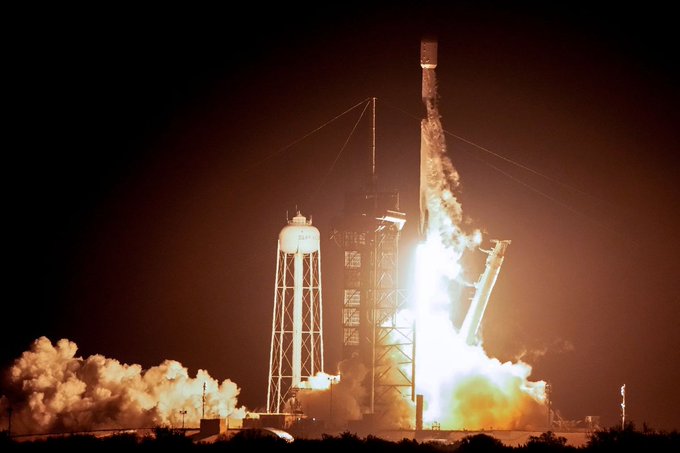Private Lunar Lander ‘Odysseus’ Successfully Launched by SpaceX on Historic Mission to the Moon
A private lunar lander Odysseus has been successfully launched by SpaceX from NASA’s Kennedy Space Center in Florida. Lifted atop a SpaceX Falcon 9 rocket, Odysseus aims to achieve the first American spacecraft landing on the Moon since the 1972 Apollo 17 mission, marking a significant milestone for both private and national space initiatives.

The robotic lander, part of NASA’s Commercial Lunar Payload Services (CLPS) program, is a crucial step in the Artemis program, which plans to send astronauts to the Moon’s south polar region in the coming years. If successful, Odysseus will become the first-ever privately-owned spacecraft to achieve a lunar landing.
The launch, originally scheduled for Wednesday, faced a 24-hour delay due to concerns about the temperature of the liquid methane used by the lander. Nevertheless, the Falcon 9 rocket lifted off flawlessly at 1:05 a.m. EST on Thursday, deploying Odysseus 48 minutes after liftoff. The spacecraft is now en route to the Moon and is expected to touch down on February 22, approximately 186 miles from the Moon’s south pole.
Odysseus, carrying a suite of six NASA instruments and six commercial payloads, is equipped with innovative technologies, including a 3D-printed main engine burning liquid oxygen and methane propellants—a first for deep space missions. The mission aims to study the lunar environment, test crucial technologies, and collect data for future moon missions.
Partially funded by NASA, the Odysseus mission is a testament to the collaboration between private and government entities, with a total investment of approximately $129 million for the instruments and transportation to the Moon. The success of private companies like Intuitive Machines is seen as a catalyst for multiple commercial missions to the Moon in the coming years.
Odysseus’s landing site at Malapert A, near the Moon’s south pole, holds scientific significance due to the potential presence of water ice. The lander is expected to operate for about a week on the lunar surface before shutting down during the two-week lunar night, which it is not designed to withstand.
This mission follows previous attempts by private companies, including the recent failure of Astrobotic’s Peregrine lander. The success of Odysseus could pave the way for future Artemis missions, providing crucial insights into the lunar surface environment and supporting SpaceX’s Human Landing System.







